Antioxidant-rich foods have long been championed by health professionals as crucial components of a healthy diet, backed by thousands of studies supporting their benefits.
Found primarily in plant foods, antioxidants help to neutralize oxidative stress, offering protection against cellular damage caused by free radicals. This capability is why antioxidants are thought to be one of the main reasons why enjoying a plant-based diet with a high intake of fruits, vegetables, and other nutrient-rich foods may reduce the risk of oxidative stress-related diseases, such as heart disease, certain types of cancer, Alzheimer's disease, and many other conditions.
A review published in Public Health Nutrition has linked diets rich in fruits and vegetables with lower death rates, a phenomenon dubbed the "antioxidant hypothesis." Researchers propose that the combined presence of antioxidants, fiber, and other essential nutrients in these foods helps protect against several chronic diseases and inflammation, adding years to your life.
Getting your antioxidants from foods rather than pills or powders is essential because the synergistic interaction of antioxidants in food paired with nutrients like fiber and essential vitamins offers superior health benefits compared to isolated supplementation. Therefore, eating berries, including veggie side dishes at most meals, drinking 100% fruit juice, or enjoying fresh or dried fruit as a snack are optimal ways of enjoying these free-radical-fighting foods in your daily diet.
Note that many processed produce items, like dried fruit, cooked vegetables, and 100% fruit juice, may have more antioxidants than their fresh counterparts but generally have higher calorie counts due to their concentrated nature. However, if you eat a plant-forward diet with a variety of fresh, frozen, dried, cooked, and juiced produce, your diet will be rich in beneficial antioxidants.
To help you get more of these natural disease-fighters into your daily diet, we compiled a list of the 25 best antioxidant-rich fruits and vegetables with the help of the Antioxidant Food Table. Published in Nutrition Journal in 2010, this comprehensive guide of over 3,000 foods is one of the most-referenced sources of the antioxidant capacity of plant-based foods and beverages. We used data from the Antioxidant Food Table, along with other sources, to compile this list.
Strawberries
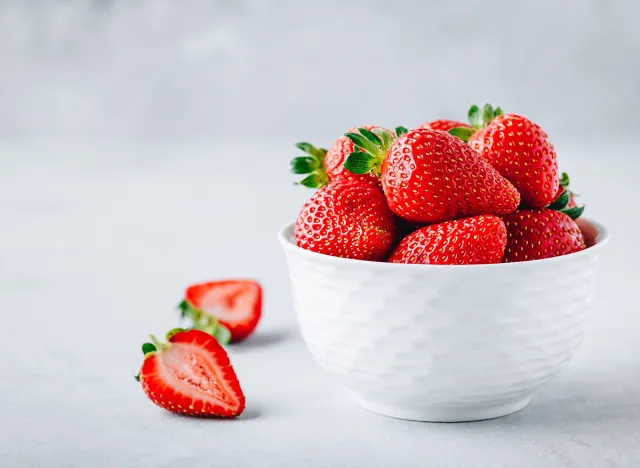
Antioxidant capacity: 2.1 mmol/3.5 oz
Strawberries are a great source of flavonoid antioxidants and vitamin C. Strawberries also provide fiber, potassium, and folate. A study reported in Critical Reviews of Food Science and Nutrition reported that strawberries are a source of ellagic acid, anthocyanins, quercetin, and catechins, and the fruit ranks high in antioxidant capacity. Studies show that strawberries are heart-healthy, help manage blood sugar levels, and tamp down inflammation.
Artichokes
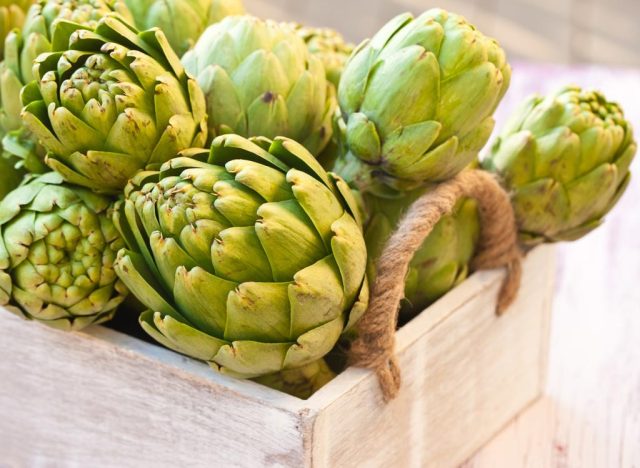
Antioxidant capacity: 3.5 mmol/3.5 oz
Along with antioxidants, artichokes also provide a variety of bioactive compounds including cynarine, chlorogenic acid, caffeic acid, and flavonoids. Artichokes have been used to improve digestion and liver health as well as lower blood pressure and cholesterol.
Curly Kale
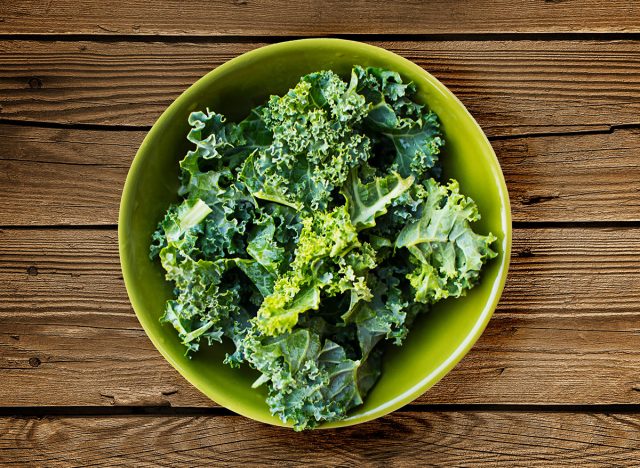
Antioxidant capacity: 2.8 mmol/3.5 oz
Cruciferous veggies, including kale, are known to be antioxidant-rich. Kale provides vitamin C, carotenoids, folate, calcium, potassium, and fiber, making it a nutrient-rich choice. One study reported that kale is also rich in polyphenolic compounds that increase its antioxidant capacity. You may want to opt for using raw kale in salads to reap the most benefits, as the research noted that cooking kale reduced the antioxidant content of this popular Brassica veggie.
Frozen Spinach
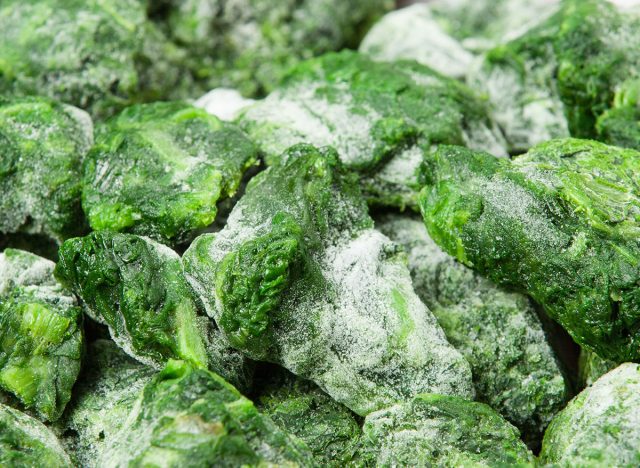
Antioxidant capacity: 1.10 mmol/3.5 oz
This leafy green can up the antioxidants in your diet. Dark green veggies, like spinach, are great sources of vitamins, minerals, and antioxidants. Spinach provides vitamins A, C, K, folate, and fiber. The carotenoids in spinach, like lutein and zeaxanthin, are potent antioxidants that provide eye health benefits. One study published in the European Journal of Clinical Nutrition reported that spinach protects against oxidative DNA damage.
100% Pomegranate Juice
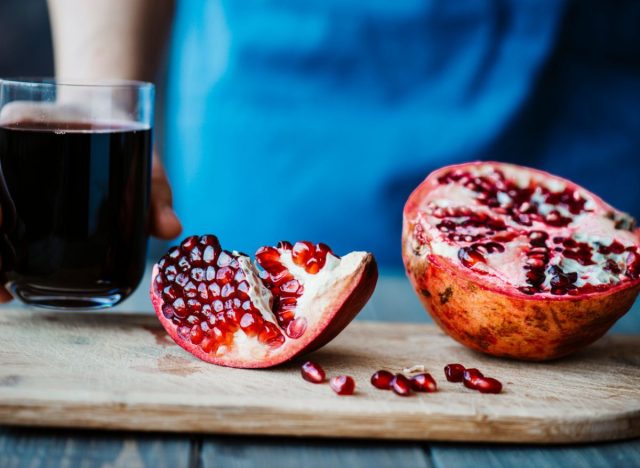
Antioxidant capacity: 2.57 mmol/3.5 oz
Pomegranate seeds ranked high in the Antioxidant Food Table with 1.9 mmol antioxidants per 3.5 ounces, but pomegranate juice is an even more concentrated way to get antioxidants into your diet. Along with red wine and black tea, 100% pomegranate juice is considered among the beverages with the highest levels of antioxidants. Research shows that pomegranate antioxidants may help with exercise performance and recovery and help combat unstable free radicals that contribute to cellular damage.
Black Olives
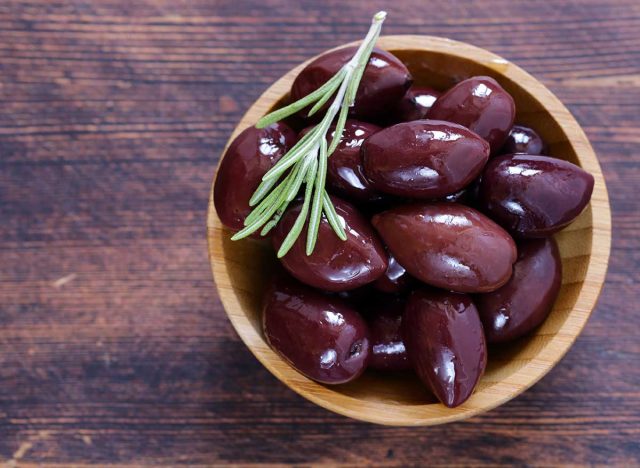
Antioxidant capacity: 1.7 mmol/3.5 oz
You may think of olives as a healthy, unsaturated fat, but they're a small fruit that is grown on olive trees. It shouldn't come as a surprise that foods that are dark purple or black hues tend to be rich in beneficial antioxidants, including vitamin E, and black olives are a great example. All olives contain antioxidants which is why using extra virgin olive oil is one of the healthiest fats to include in your diet.
Dried Apricots
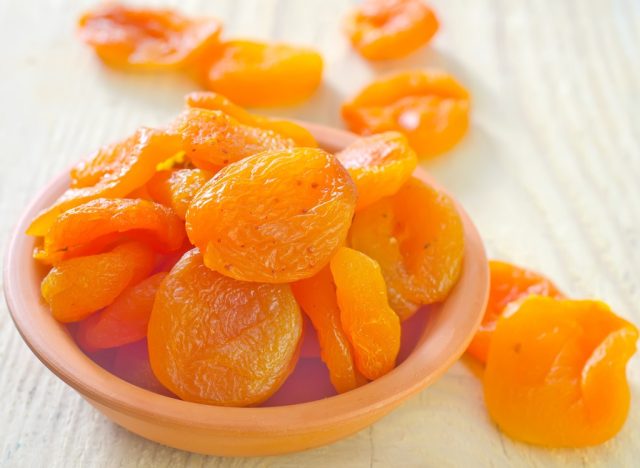
Antioxidant capacity: 3.1 mmol/3.5 oz
A study published in the journal Foods reported that dried apricots are rich in flavonoids, carotenoids, and phenolics and they have strong antioxidant activity. Apricots also provide vitamins A, C, and E; B vitamins, potassium, magnesium, and several other essential nutrients.
Prunes
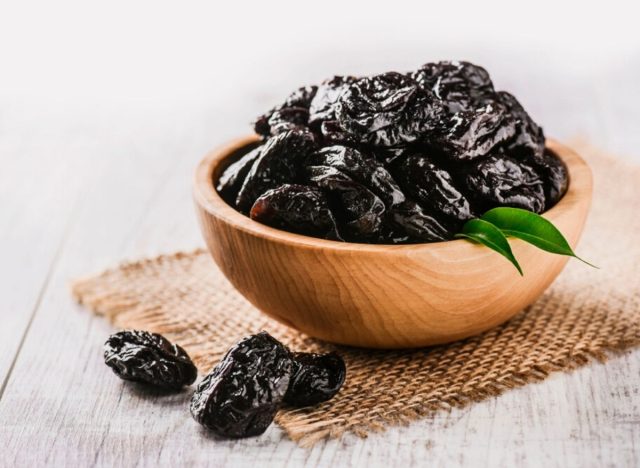
Antioxidant capacity: 3.7 mmol/3.5 oz
Several studies include prunes as among the produce picks that are high in antioxidants. In the Antioxidant Food Table prunes ranked 11th among 3,100 foods and beverages included in the analysis. One study in the journal Biofactors revealed that prunes contain many compounds that contribute to their antioxidant capacity. Compounds including cinnamic acids, benzoic acids, lignans, and flavonoids together make prunes a great addition to your diet to help boost the antioxidant capacity of your meals and snacks. Prunes provide myriad other beneficial nutrients, including fiber, to help maintain a healthy GI tract and other health benefits.
Dried Apples
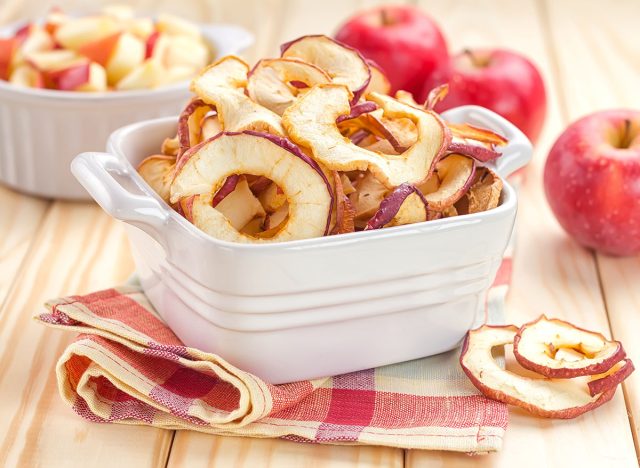
Antioxidant capacity: 3.8 mmol/3.5 oz (dried); 0.4 mmol/3.5 oz (fresh)
Dried fruit commonly has more antioxidants than fresh because it's a more concentrated source of the fruit. The Antioxidant Food Table reports that dried apples have a higher antioxidant capacity than fresh apples; however, when enjoying dried fruit, it's important to keep portion sizes in check as calories in dried fruit add up quickly.
Okra
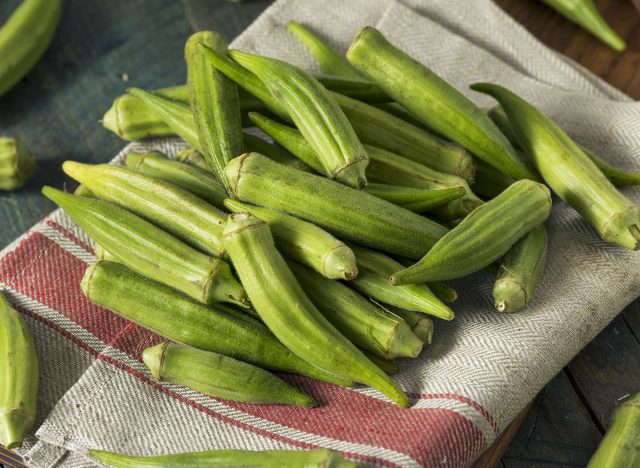
Antioxidant capacity: 4.2 mmol/3.5 oz
Like curly kale, okra is a great way to get more antioxidants into your diet. Okra provides vitamins A, C, and K, folate, manganese, and B vitamins. Okra has been studied for its role in reducing the risk of type 2 diabetes, cardiovascular disease, and digestive disorders, according to research published in the journal Molecules.
African Baobab
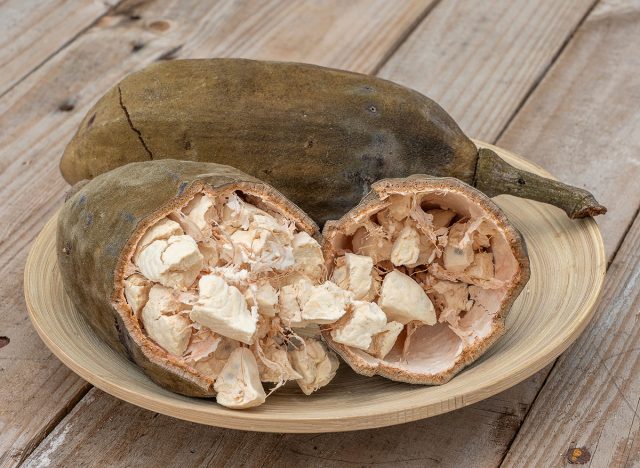
Antioxidant capacity: 10.8 mmol/3.5 oz
The Antioxidant Food Table highlights African Baobab fruit as a powerhouse, boasting 10.8 millimoles (mmol) of antioxidants per 3.5 ounces, making it one of the top sources of antioxidants among fruits and veggies. Indigenous to Africa, Australia, and Madagascar, Baobab trees produce fruit with a unique dry white powder texture when ripe, rather than juicy pulp. You can add the potent powder to yogurt, oatmeal, smoothies, or other recipes. Additionally, the fruit stands out as one of the richest sources of vitamin C, which is known to be a potent antioxidant.
Blackberries
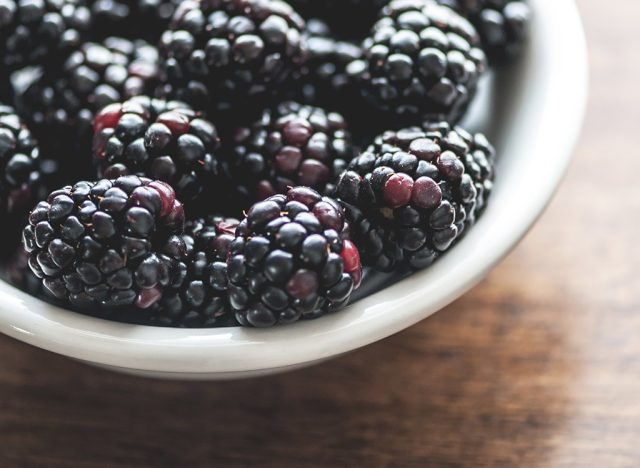
Antioxidant capacity: 4.02 mmol/3.5 oz
The dark hue of blackberries is a cue that they are bursting with antioxidants, including ellagic acid, tannins, and anthocyanins. Blackberries are known to contain a broad range of phenolic compounds and flavonoids, which contribute to their strong antioxidant capacity. Blackberries are notable for their health benefits based on the high nutritional content of dietary fiber, vitamin C, vitamin K, folic acid, and manganese.
Cranberries

Antioxidant capacity: 3.29 mmol/3.5 oz
Cranberries may be tiny, but they pack a big antioxidant punch, thanks to the anthocyanins and polyphenols the fruit provides. Cranberries and cranberry juice are known to help prevent urinary tract infections but other research outlined in the Journal of the Science of Food and Agriculture shows that the berries can also inhibit H. pylori in the stomach and protect against intestinal inflammation.
Blueberries
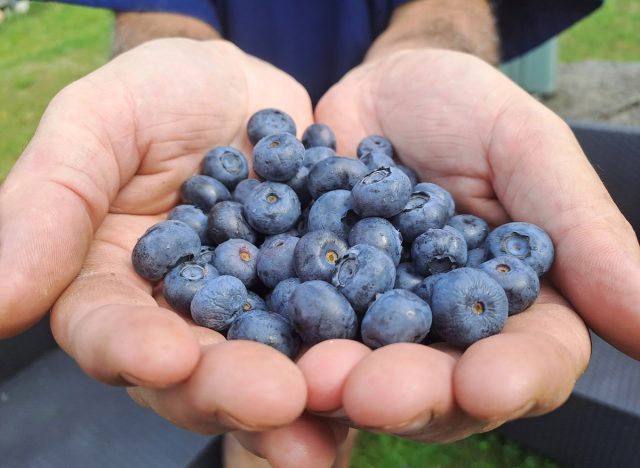
Antioxidant capacity: 1.85 mmol/3.5 oz
Blueberries are often heralded as a superfruit for their antioxidant potential. Studies show that blueberries may help keep your mind sharp as you age, and they also help with blood flow and they lower harmful, LDL cholesterol levels while maintaining healthy blood vessels. For a bigger antioxidant punch, wild blueberries have even more antioxidants and less natural sugars compared to cultivated blueberries.
Raspberries
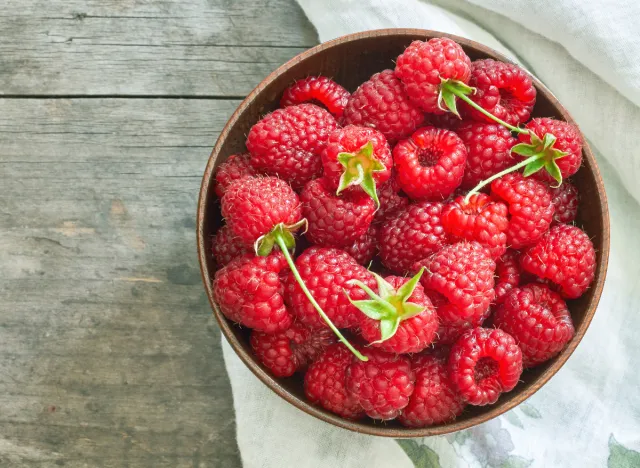
Antioxidant capacity: 3.35 mmol/3.5oz
Raspberries are among the top fruit sources of antioxidants. Red raspberries' antioxidants are primarily from ellagic acid, a phenolic compound that has exhibited anti-cancer benefits, and anthocyanins, which provide heart health benefits and may protect against age-related declines in memory and cognition, according to Oregon State University scientists. A cup of raspberries packs in 8 grams of fiber, making raspberries an excellent choice for GI health and wellness.
Tart Cherries
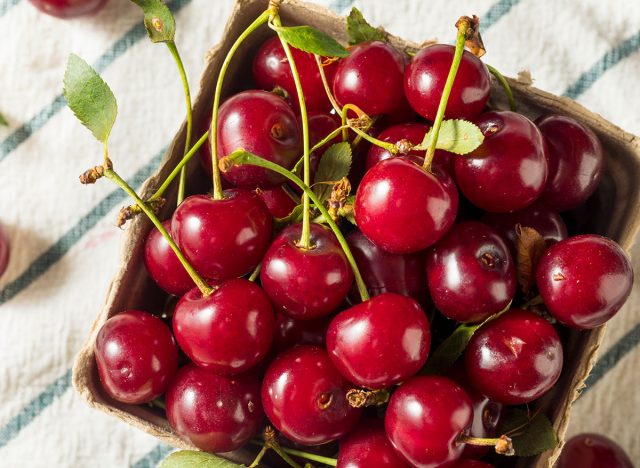
Antioxidant capacity: 7.1 mmol/3.5 oz
While tart cherries are rarely eaten fresh, dried tart cherries are a great addition to salads and baked goods. Drinking 100% tart cherry juice is also a potent way to get the health benefits of tart cherries. Tart cherries provide three potent antioxidant compounds: anthocyanins, flavanols, and chlorogenic acid. Research shows that chart cherries may help with blood pressure, moderate blood sugar levels, tamp down inflammation, and more. Tart cherry juice is frequently recommended to alleviate post-exercise muscle soreness, with one study published in the journal Nutrients highlighting its effectiveness in reducing inflammation, enhancing markers of DNA repair activity, and lowering blood pressure and cholesterol levels.
Dried Goji Berries
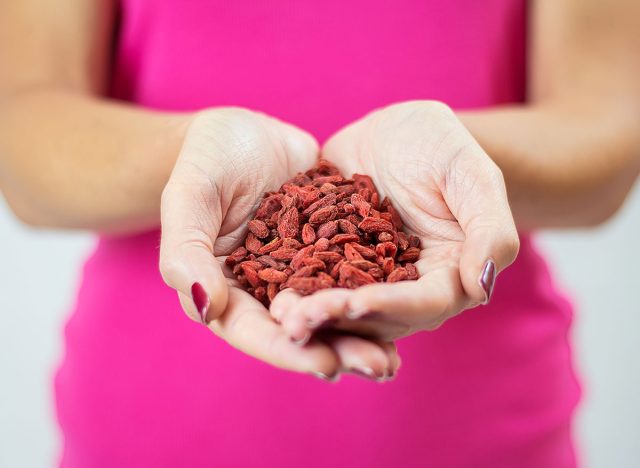
Antioxidant capacity: 4.31 mmol/3.5 oz
Goji berries have been enjoyed in China for thousands of years for their health benefits. Today, there are more than 700 peer-reviewed research papers about Goji berries. Goji berries contain carotenoids, phenolic compounds, and other bioactive compounds that contribute to their antioxidant capacity. Research shows that the berries provide heart health, anticancer, immune-busting, and eye health benefits.
Beets
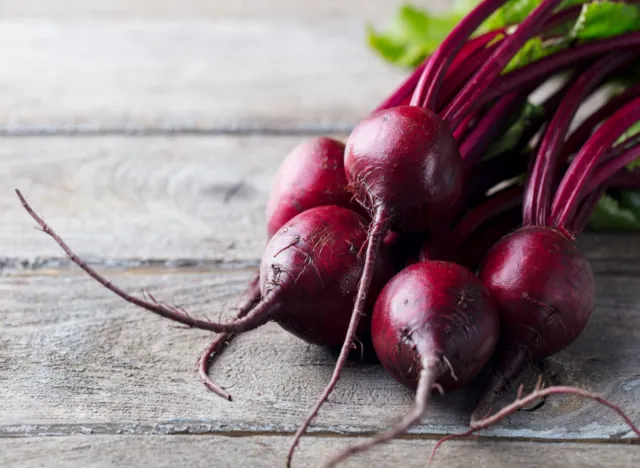
Antioxidant capacity: 1.68 mmol/3.5 oz
With their ability to stain countertops and clothing, it's no wonder that beets are teeming with antioxidants. Nutritionally, beets also provide folate, potassium, vitamin C, and manganese. Beets also contain nitrates that can help relax blood vessels to improve athletic performance, enhance recovery post-exercise, and help manage blood pressure. The antioxidant capacity of beets stems from the betalains they contain, according to research published in Food Science & Nutrition. Beets also provide anti-tumor benefits, which are also thought to be linked to their antioxidant activity.
Cooked Broccoli
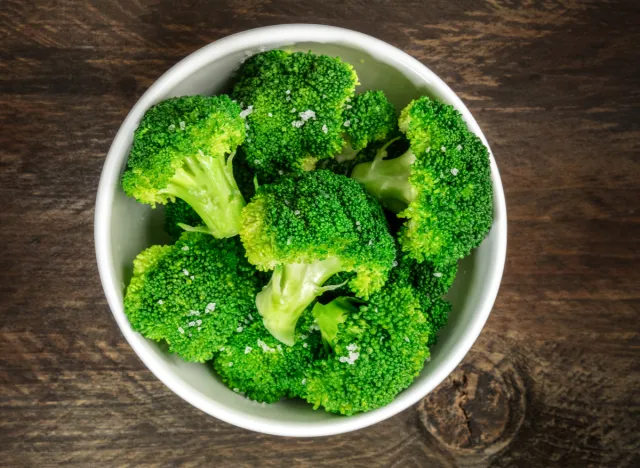
Antioxidant capacity: 1 mmol/3.5 oz
Another cruciferous veggie that provides an opportunity to up the antioxidants in your diet is broccoli. While fresh broccoli will provide fewer antioxidants per serving (due to its water content), cooked broccoli is more nutrient-dense. Broccoli provides vitamins A, C, and K; calcium, potassium, iron, and antioxidants, in the form of glucosinolates, sulforaphane, and indole-3-carbinol. Broccoli is known to provide myriad health benefits including heart health, anti-cancer, eye health, weight management, and immune health benefits, according to research published in the journal Antibiotics.
Dried Mango
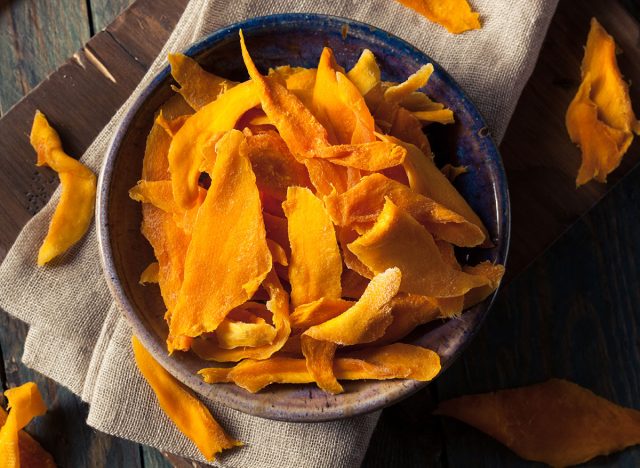
Antioxidant capacity: 1.7 mmol/3.5 oz
Mangos provide more than 15 different essential nutrients including vitamins B, C, A, and E along with fiber, potassium, and magnesium. Known for their heart health benefits and potential to reduce the risk of certain cancers, mangos also contribute to gastrointestinal well-being. A study published in the journal Molecular Nutrition & Food Research highlights the potential of mango as a dietary source of gallic acid and gallotannins, suggesting anti-inflammatory and anti-carcinogenic properties.
Red and Orange Bell Peppers
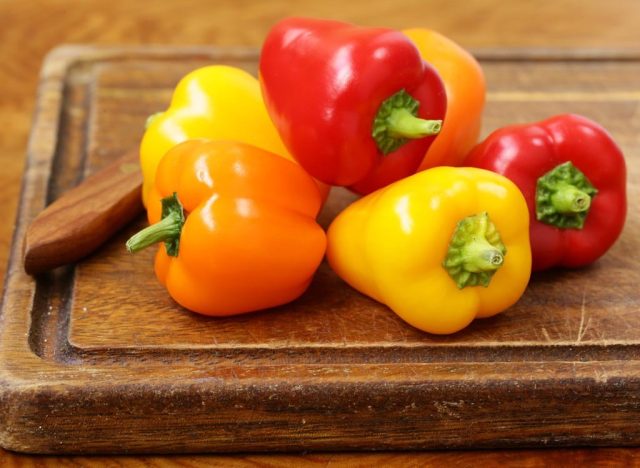
Antioxidant capacity: 1.0 mmol/3.5 oz
Red- and orange-hued bell peppers are higher in antioxidants than green bell peppers. Red and orange bell peppers provide more than 100% of your recommended daily intake for vitamin C, and they also provide vitamins A, E, and K; B vitamins, and potassium. One of the unique bioactive compounds with antioxidant capacity present in bell peppers is capsanthin, which has been linked to health benefits like lowering cholesterol and reducing body fat and inflammation.
Brussels Sprouts
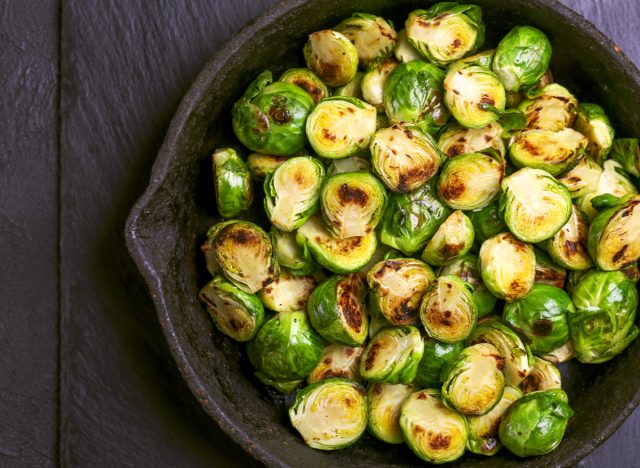
Antioxidant capacity: 1.33 mmol/3.5 oz
As a cruciferous veggie, Brussels sprouts are known to be nutritional powerhouses. A cousin to broccoli, cauliflower, kale, and collard greens, Brussels sprouts pack a lot of antioxidants into their tiny size along with many other essential nutrients. Brussels sprouts provide anti-cancer properties as evidenced by several studies. Other studies suggest that Brussels sprouts can improve heart and GI health and may help control blood sugar levels.
Sundried Tomatoes
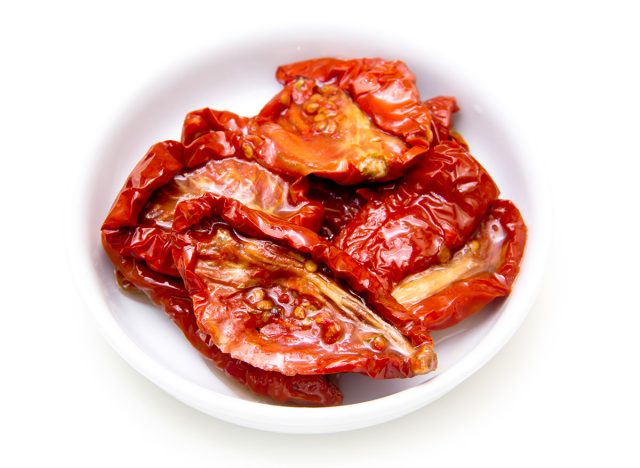
Antioxidant capacity: 1.3 mmol/3.5 oz
Sundried tomatoes are a potent source of antioxidants that combat oxidative stress and reduce the risk of chronic diseases such as heart disease and certain types of cancer. They are a concentrated source of three carotenoid antioxidants, lycopene, lutein, and zeaxanthin—the latter two which support eye health—as well as the antioxidant vitamin C.
Oranges
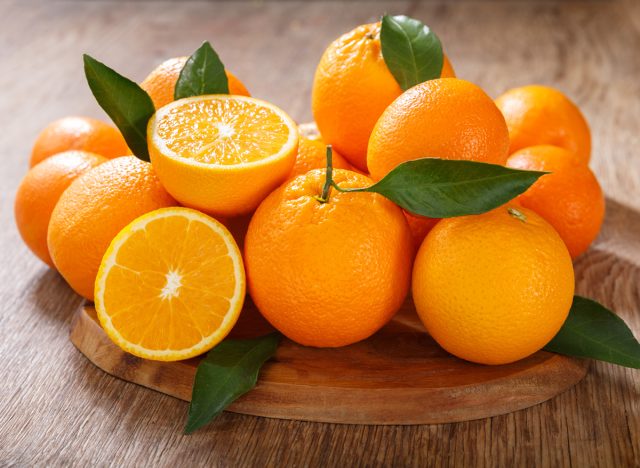
Antioxidant capacity: 0.9 mmol/3.5 oz
Oranges are a popular antioxidant-rich citrus fruit. Citrus fruits contain unique antioxidants including certain flavones, terpenes, and limonoids, that have strong antioxidant properties. Oranges also provide vitamins, C and A, potassium, calcium, fiber, and B vitamins. Studies show that oranges can help boost the immune system; their potassium helps with managing blood pressure; and their antioxidants provide anti-cancer, anti-inflammatory, neuroprotective, and anti-aging properties.
No comments:
Post a Comment